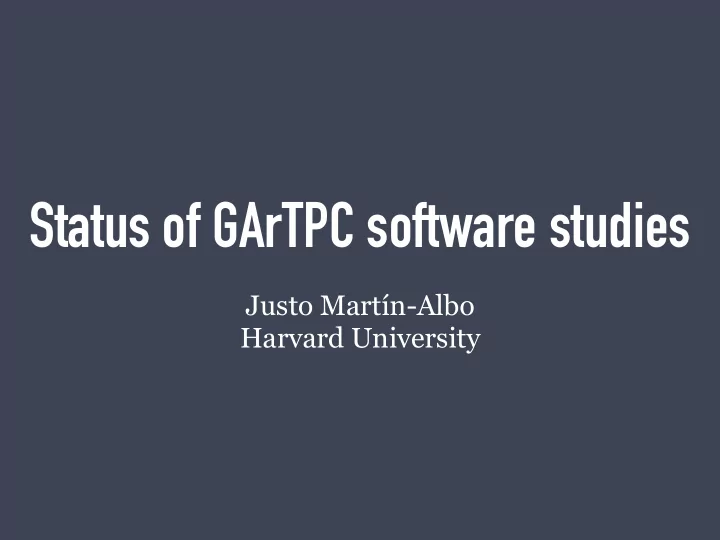

Status of GArTPC software studies Justo Martín-Albo Harvard University
The participants of the WS agreed that the following questions should be answered and documented in a docDB document: 1. What is the tracking efficiency as a function of track angle, especially when the track is along the wire in the case of the STT? 2. What is the energy threshold for detecting protons/pions and how important is this to reduce systematics? 3. Momentum/angular resolution of all particles 4. Pi0 energy resolution and efficiency in neutrino interactions (overlays, multiple interactions & background from rock) 5. What are the uncertainties in energy scale for e/mu? 6. What are the uncertainties in angular resolution? 7. What are the key performance parameters for the ECAL to detect NC pi0 8. Can neutrons be detected in the tracker? 9. What is the expected performance for key channels (see appendix A) including yields? The answers to some of these questions are already documented in the CDR and by the ND TF, but should be summarised in a short document. We have to ensure that a similar level of cheating is used when answering these questions. Simulations should be performed using a common framework as much as possible.
PRODUCTION STATUS 4 • Production started this week. Aiming at 1E20 POT. • Generating separate samples for signal events in active volumes (both LAr and GAr) and backgrounds, for two different geometries (dipole magnet and KLOE). • Samples will be mixed before Edep-sim step using new tool developed by Mike K. • Edep-sim files should be ready by next week.
RECONSTRUCTION 5 • ALICE simulation and reconstruction software made available to us. • We’ve been able to install it and run it. Working on understanding the output. • We’ll feed the simulation with spill-like collections of tracks to prove, at the very least, the ability to reconstruct the ~20 or 25 tracks expected in a GArTPC event.
Recommend
More recommend